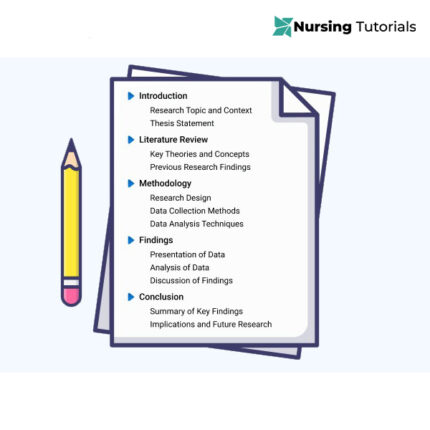Solution: Chamberlain NR 565- Advanced Pharmacology Midterm Exam Solutions
NR 565 – Advanced Pharmacology Midterm Exam Flash Cards (with Answers)
This comprehensive flashcard set is designed to help nurse practitioner students master key pharmacology concepts covered in the NR 565 Advanced Pharmacology midterm at Chamberlain University. It simplifies dense textbook material into clear, exam-focused question and answers flashcards.
Content Overview:
The document contains 244 flashcards, each focusing on high-yield pharmacology principles and clinical applications. The content covers:
-
Drug Safety and Special Populations
-
Pregnancy drug safety (e.g., teratogenic risks, trimester sensitivity)
-
Pediatric and geriatric pharmacokinetics and pharmacodynamics
-
BEERS Criteria for elderly medication safety
-
-
Pharmacokinetics & Pharmacodynamics
-
CYP450 enzyme system (inducers/inhibitors, mnemonic aids)
-
Drug absorption, distribution, metabolism, and excretion principles
-
Factors affecting drug response (age, weight, genetics)
-
-
Prescriptive Authority & Legal Framework
-
Full, reduced, and restricted practice authority for NPs
-
Prescription components and DEA-controlled substance schedules (I–V)
-
State and federal prescribing regulations
-
-
Medication Adherence & Patient Education
-
Causes of non-adherence and strategies to promote compliance
-
Patient education essentials: dosage, side effects, administration, and follow-up
-
-
Opioid Prescribing & Safety
-
CDC opioid guidelines (12 core principles)
-
Opioid pharmacology (agonists, antagonists, agonist-antagonists)
-
Black box warnings, MME calculations, PDMP use, and naloxone protocols
-
-
Clinical Decision-Making
-
Genetic testing implications and informed consent
-
Managing drug interactions and monitoring therapy outcomes
-
Rational prescribing based on cost, function, and special populations
-
How this document will help you pass ?
- Condensed and Targeted:
Focuses on exam-relevant facts instead of textbook theory — ideal for quick review before the midterm. - Question–Answer Format: Mimics the test style, reinforcing active recall and confidence for multiple-choice and clinical scenario questions.
- Mnemonic Support: Creative memory aids simplify complex pharmacology processes like the CYP450 system.
- Clinical Context: Connects pharmacology to real-world NP practice, aligning with Chamberlain’s exam expectations.
- Covers Every Key Domain: From legal prescribing to special populations, it ensures no high-weight topic is missed.
Having used it and passed my exam, this document is the best study guide you can rely on instead of reading hundreds of pages. With consistent review, you can confidently pass the NR 565 midterm on the first attempt.
$75.00 Original price was: $75.00.$30.00Current price is: $30.00.
Chamberlain NR 565- Advanced Pharmacology Midterm Exam Solutions/flash Cards
| During what trimester is a pregnant woman most at risk for adverse drug reactions with potential long term consequences? | 1st trimester (fetus most at risk d/t rapid growth) |
| What is BEERS criteria? | Recommendations of medications inappropriate for elderly (65 and older), prescriber ultimately decides |
| What is the CYP450 (cytochrome P450) | liver enzyme system where medications are metabolized, can either be inducers or inhibitors and create drug-drug interactions |
| CYP450 inducers | Speed up metabolism of drugs (drug is cleared faster), drug has lesser effect (decrease blood levels of drug), elevate CYP450 enzymes |
| CYP450 inducers pneumonic | “Bullshit Crap GPS INDUCES rage” |
| CYP450 inducer drug names | Barbituates, St John wort, Carbamazepine, rifampin, alcohol, phenytoin, griseofulvin, phenobarbital, sulfonylureas |
| CYP450 inhibitors | inhibit metabolism, increase blood levels of medications |
| CYP450 pneumonic | “VISA credit card debt INHIBITS spending on designers like CK to look GQ” |
| CYP450 inhibitors drug names | Valproate, isoniazid, sulfonamides, amiodarone, chloramphenicol, ketoconazole, grapefruit juice, quinidine |
| Physiological changes during pregnancy that impact pharmacodynamics and pharmacokinetic properties of drugs? | increase glomerular filtration rate leads to increase durg excretion increase hepatic metabolism
decrease tone and motility of bowel increase drug absorption |
| Examples of medications that can be teratogenic | Antiepileptic drugs, antimicrobials such as tetracyclines and fluoroquinolones, vitamin A in large doses, some anticoagulants, and hormonal medications such as
diethylstilbestrol (DES). |
| How is absorption of intramuscular medications different in neonates? | slow and erratic due to low blood flow in muscles first few days of life |
| Why is absorption of medication in the stomach increased in infancy? | delayed gastric emptying |
| Some medications that should be avoided in the pediatric patient? | glucocorticoids, discoloration of developing teeth with tetracyclines, and kernicterus with sulfonamides, levofloxacin (antibiotics)
aspirin (Severe intoxication from acute overdose) |
|
what should be included in medication administration patient education? |
dosage size and timing
route and technique of administration duration of treatment drug storage nature and time course of desired responses nature and time course of adverse responses finish taking antibiotic |
|
What are some things that put the elderly patient at higher risk for adverse drug reactions? |
reduced renal function
polypharmacy (the use of five or more medications daily) greater severity of illness presence of comorbidities use of drugs that have a low therapeutic index (e.g., digoxin) increased individual variation secondary to altered pharmacokinetics inadequate supervision of long-term therapy poor patient adherence
|
|
How can healthcare providers decrease likelihood of an elderly patient experiencing an adverse drug reaction? |
obtaining a thorough drug history that includes over-the-counter medications considering pharmacokinetic and pharmacodynamics changes due to age
monitoring the patient’s clinical response and plasma drug levels using the simplest regimen possible monitoring for drug-drug interactions and iatrogenic illness periodically reviewing the need for continued drug therapy encouraging the patient to dispose of old medications taking steps to promote adherence and to avoid drugs on the Beers list |
|
How can we promote medication adherence with elderly patients? |
simplifying drug regimens
providing clear and concise verbal and written instructions using an appropriate dosage form clearly labeling and dispensing easy-to-open containers developing daily reminders monitoring frequently affordability of drugs support systems |
Click ” Add to Cart” or “Buy now” to access the entire solution.



